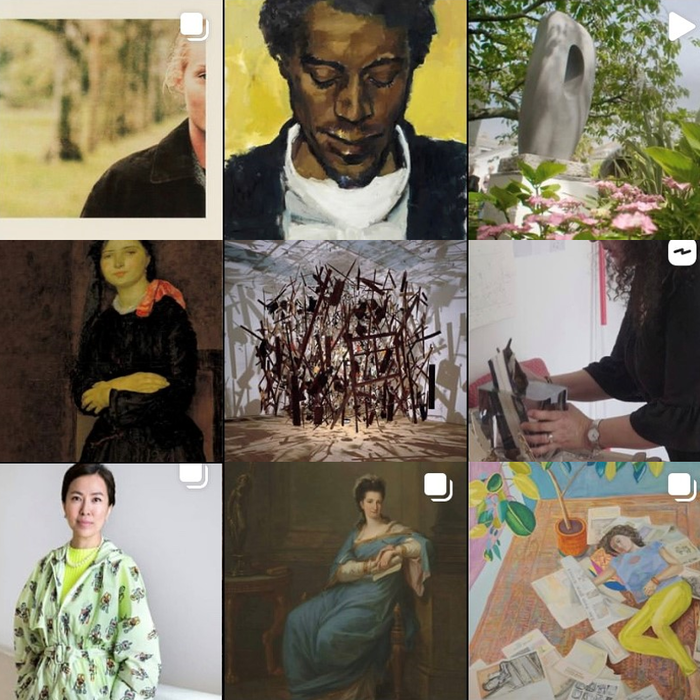Vuillard and the virus: how a 19th century painter captured the contradictions of life under lockdown
The French artist’s depiction of anonymity and claustrophobia is jarring in its harmoniousness; this tension speaks to us now, more than ever, argues Alice Bergin.
We all need our own images to make sense of these ‘unprecedented’ circumstances. Barren streets emptied by an invisible threat have meant that now, more than ever, visuals have acquired a potency that is essential to our survival.
Some people are saying that we seem to exist in an Edward Hopper painting. It is true that Hopper, whose works depict the isolation of modern life as it was in the 1940s, may resonate with a civilisation that feels the pain of social detachment with newfound intensity. After all, some of the most compelling images in the news thus far have shown the world without us in it. But what if, as well as vacant shops and deserted cities, we find a distinctly invisible presence in our own homes?
Now, more than ever, visuals acquire a potency that is essential to our survival.
Last year, Bath’s Holburne Museum presented the exhibition ‘Edouard Vuillard and the Poetry of the Everyday’. A prominent member of a semi-mystical group known as ‘Les Nabis’ and one of the leading figures in French art at the end of the 19th century, Vuillard is best known for his interiors, in which subjects are blended into patterns of colour. For me, his portrayal of both the desire for and rejection of domestic confinement lends itself perfectly to the contradictions of life under lockdown.
At first glance, Vuillard’s interiors are stiflingly claustrophobic. His small, richly patterned scenes are rendered in blotchy oil paint and often depict the corner of a truncated room in which wall, table and figure merge into one. His almost exclusively female subjects are on first encounter unidentifiable - a shape of blue, perhaps, which could be mistaken for a shadow or the silhouette of an armchair.
Conflicting sensations of suffocation and harmony are equally perceptible in the contradictory sense of selfhood we experience under lockdown.
Confined to our homes and limited to one outing a day, the claustrophobia of the domestic environment is a sensation all too recognisable to a society coping with the coronavirus pandemic. As the vast majority of us are unable to travel further than the local park, recent weeks have revealed the intense oppressiveness of the familiar. This claustrophobia, the result of complete and unrelenting immersion in our most intimate environment, resounds notably in Vuillard’s work. In 'Interior with Three Lamps, Rue Saint-Florentin' (1899) we see a sitting room characterised by a surfeit of decoration including an intrusive, patterned wallpaper. The titular ‘three lamps’ are arranged with the same distinction as the three figures, and we get the sense that they too are merely furnishings in this ambiguous space. While the scene may be static – one figure examines an album, another reads a book – the imprecise brush strokes achieve blurred edges that make the scene buzz in its quietness. Much like in Britain’s deserted streets, there is a hum of tension and anxiety underneath the silence.
One consequence of social distancing has been an increasing atmosphere of anonymity. Isolated from the communities that form an integral part of individual identity, it is easy to feel stripped of one’s individuality when society has been reduced to its bare essentials and personal tragedies constitute figures in daily death tolls. In the absence of friends and usual routines, one could be forgiven for feeling a loss of selfhood, a sensation that is central to Vuillard’s presentation of the human form. His subjects adopt an air of anonymity as they exist in a world in which objects and living beings exert an equally dominant presence that results, rather strangely, in a sense of human absence.
This is not to suggest, however, that the experience of Vuillard’s work is wholly pessimistic. Vibrant undulations of pattern and colour result in compositions that sing with synchronicity – the artist encouraged viewers to ‘conceive of a picture really as a series of harmonies’. Underneath each painting’s dizzying decoration there is a wonderfully complimentary sense of what Vuillard called ‘poetry’ and ‘emotion’. They are at once suffocating and harmonious.
Such conflicting sensations are equally perceptible in the contradictory sense of selfhood we experience under lockdown. We are at once oppressed by familiarity and numbed by anonymity. While Vuillard’s meditations on ‘the music of painting’ might seem fanciful at a time of national catastrophe, it is undeniable that we must each seek our own ways of visualising this uniquely contradictory experience, and it seems Vuillard’s interiors are a good place to start.
 News / SU stops offering student discounts8 January 2026
News / SU stops offering student discounts8 January 2026 News / Uni-linked firms rank among Cambridgeshire’s largest7 January 2026
News / Uni-linked firms rank among Cambridgeshire’s largest7 January 2026 Comment / Plastic pubs: the problem with Cambridge alehouses 5 January 2026
Comment / Plastic pubs: the problem with Cambridge alehouses 5 January 2026 News / New movement ‘Cambridge is Chopped’ launched to fight against hate crime7 January 2026
News / New movement ‘Cambridge is Chopped’ launched to fight against hate crime7 January 2026 Comment / What happened to men at Cambridge?31 December 2025
Comment / What happened to men at Cambridge?31 December 2025









